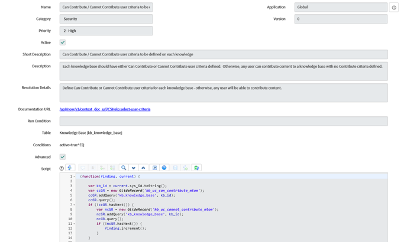Very recently ServiceNow released the Quebec version of its cloud solution, NowPlatform, presented as the ‘platform of platforms’ for 21st century businesses. Devoteam took part in the testing of this version and, based on this experience, we have laid out in this article the new game changing features for our customers.
With the features in this new release, organisations are even better equipped to deploy digital workflows that connect people and systems, gain agility and accelerate their digital transformation.
Whether you are a platform owner, an architect, or a business expert with no particular development skills, anyone can now design and create workflows, processes and interfaces with the recent Quebec release.
1 – The UI Builder
The JavaScript framework “Now Experience UI” first appeared in the Orlando version and was built according to the web component standard. It opened the way for ServiceNow developers to create custom web components and deploy modern, ergonomic user interfaces.
While the Orlando and Paris versions of this framework were limited to Workspaces only, the UI Builder offered with Quebec is free of all constraints. It allows citizen developers to design new pages and content for Service Portals, Workspaces and, more broadly, for the user experience, for example, by allowing the authentication path on the platform to be personalised.

![]()
The UI Builder is a WYSIWYG (What You See Is What You Get) web editor. It allows you to create Experiences, successions of pages and visuals that the App Shells will integrate into the Service Portals and Workspaces
![]()

The UI Builder is based, among other things, on the Entity View Action Mapper (EVAM), a feature that standardizes the display of data in the form of a map, list or grid in the pages of Experiences built with the UI Builder.

2 – The Scan Forum
Until now, assessing the health of a ServiceNow instance has required the use of fee-based expert services, such as the Healthscan offered by ServiceNow. Now the new Instance Scan application allows each customer to autonomously assess the configurations performed on the platform and thus quantify the overall health and security level. From there, remediation projects and adoption of ServiceNow implementation best practices can be triggered.

A scan can be global e.g. across the whole instance, or targeted to a specific Application or Update Set:

Scans can be performed on demand or scheduled at regular intervals.

The scan results are presented on a dedicated Dashboard:

Check rules can be tailor-made and organised in Suites to target a specific need.
3 – AI Search
The Zing search engine, which has been operating on the platform for years, will gradually give way to AI Search based on recent Artificial Intelligence technologies. This offers users search functionalities worthy of those found on our consumer applications. Artificial Intelligence returns contextualised and enriched information according to the user’s profile called “genius results”. This personalisation and the relevance of the answers increase the possibility for the user will be able to solve the problem by themselves. The search results are continuously improved and adjusted to each query thanks to Machine Learning. On the linguistic and cognitive aspects, the engine is now able to correct possible typing errors and search for the right matches.
The functionality is available across all their platform experiences: service portals, mobile apps and chatbots. An advanced Dashboard, allowing reporting on search trends, is available on the ServiceNow Store.

4 – Adaptive Authentication Policies
Until now, access to ServiceNow instances could be secured by controlling IP addresses. Regardless of the user’s profile, if the user was not within a range of authorised addresses, they were denied access to the platform. Now with Quebec, authentication to the platform is adaptive. Depending on the user’s IP address, roles or groups, policies defined in the system will determine whether or not the user is authorised to connect.

Example of an access policy:

Quebec also offers for the first time authentication by certificate, via Personal Identity Verification (PIV) card or Common Access Card (CAC).
5 – Encryption
The security arsenal of the ServiceNow platform has been enhanced with the Key Management Framework (KMF). The KMF allows you to better protect instance data in accordance with best practices for security, cryptography, access control, and encryption key management and protection, such as NIST 800-57. A dedicated interface allows you to manage and fully customise the encryption on the instance.
With Quebec, ServiceNow once again demonstrates that it is one of the most innovative publishers in the world. In the low-code/no-code trend, the UI Builder makes the platform even more scalable. The solution is becoming more democratic and more secure.
